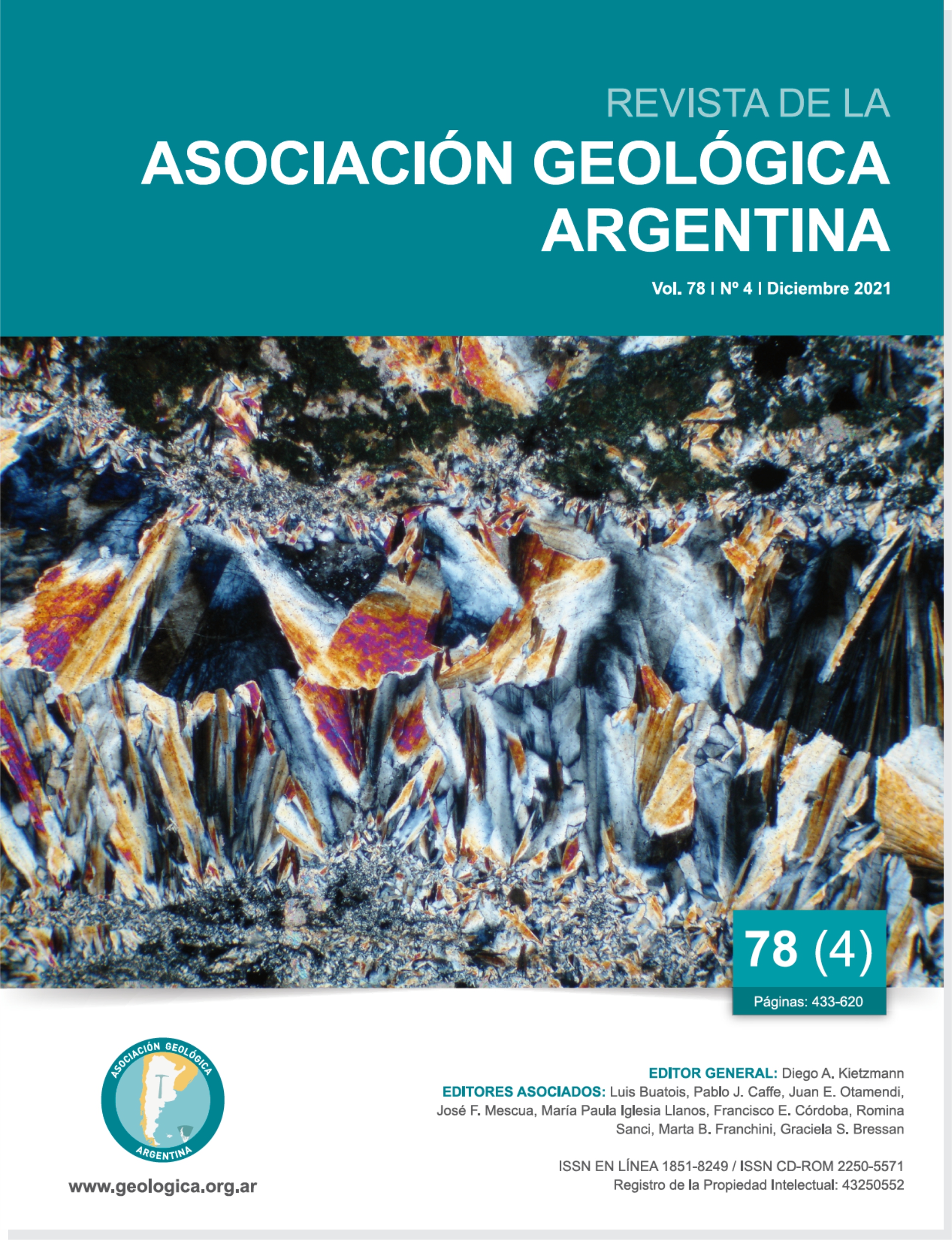Stratigraphic review and paleoenvironmental evolution of the Lower Mesozoic of the Southeastern San Juan Province, Argentina
Main Article Content
Abstract
In the Southeast of the San Juan province and Northwest of San Luis province, outcrop the stratigraphic successions of the Marayes-El Carrizal (Triassic-Jurassic) and San Luis basins (Cretaceous). The boundary between both basins was previously established in the El Gigante Hill, along the unconformity found at the base of the Los Riscos Formation, assigned to Cretaceous by stratigraphic criteria. In this contribution was conducted an exhaustive analysis of these depositional areas, with emphasis on the outcrops of the Quebrada del Barro and Balde de Leyes Formations and those previously assigned by correlation to the Los Riscos and El Jume Formations in SE of the San Juan province. Those included eight stratigraphic-sedimentological sections, the paleoenvironmental interpretation, the study of the bounding surfaces and a biostratigraphic analysis of the recently found paleovertebrate associations. This fossil record occupies the Norian-Hettangian temporal range, according to the paleovertebrate assemblages present in the Quebrada del Barro (Norian-Rhaetian), Los Riscos (Rhaetian) and Balde de Leyes (Hettangian) Formations. Based on these studies, it is proposed that the Los Riscos and El Jume Formations are not present in the study area, being restricted to the southern area of the San Luis basin. Thus, it is proposed to incorporate the outcrops originally interpreted as Los Riscos and El Jume Formations, to the upper portion of the Marayes-El Carrizal basin, assigning them other stratigraphic denomination. Besides, the previously established boundary between both basins has be interpreted as a local erosive unconformity, developed during a short chronostratigraphic interval (Raetian-Hettangian). Consequently, from the northernmost portion of the Marayes basin to Cerro Guayaguas area, the regional extensional angular unconformity, developed at the base of the El Toscal Formation, is assigned as the interbasin boundary. Therefore, establishing this new stratigraphic scheme, the Marayes-El Carrizal basin would have developed as a succession of continental fluvio-alluvial paleoenvironmental developed in a time interval of increasing aridization from Carnian to Hettangian. Unlike this basin, the Cretaceous basin, according to the bibliography, developed during a period of semi-aridity that culminated in a humid period, represented by the Lagarcito Formation
Article Details

This work is licensed under a Creative Commons Attribution-NonCommercial 4.0 International License.
Nota de copyright
Los autores conservan los derechos de autor y garantizan a la revista el derecho de ser la primera publicación del trabajo licenciado según una licencia de atribución Creative Commons que permite a otros compartir el trabajo con el reconocimiento de la autoría y de la publicación en la que se publicó por primera vez.
Declaración de privacidad
Los nombres y direcciones de correo electrónico introducidos en esta revista se usarán exclusivamente para los fines declarados por esta revista y no estarán disponibles para ningún otro propósito u otra persona.

